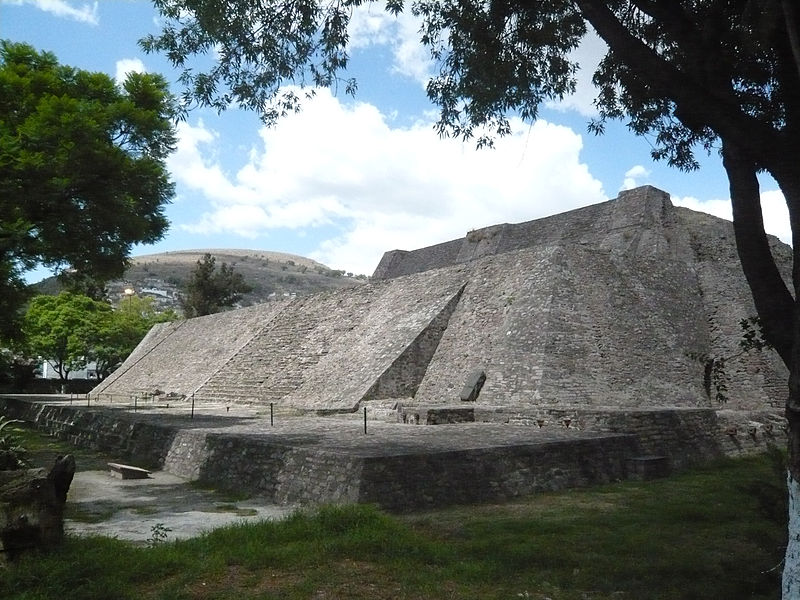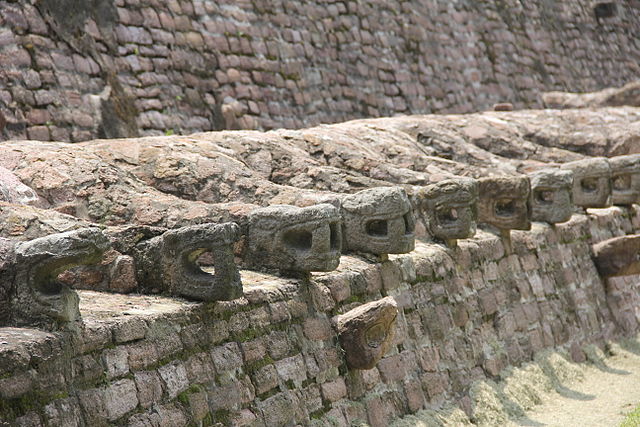
Even closer than Teotihuacan, there are significant ruins you can reach on Metrobus Line 3. Just take it to the very end of the line, and the Tenayuca ruins are right there!
The pyramid at Tenayuca is technically in Tlalnepantla de Baz, in the State of Mexico. The site is what remains of a fortified city, mostly from the late 1200s built by Chichimeca tribes. Some remains indicate that the site had already been occupied during the Classic Period. The population is said to have increased in the early Post-classic and continued to increase after the fall of Tula, when Tenayuca is thought to have became a significant regional power. By the mid 14th century, Tenayuca was conquered and replaced as a regional power by nearby Azcapotzalco. Around 1434, Tenochtitlan conquered the city bringing it fully under Aztec control.
The chronicler, Bernal Díaz del Castillo referred to Tenayuca as the “town of the serpents,” but at some point later the site was entirely abandoned. What can be seen today was only rediscovered in 1925.
Tenayuca is the earliest example of a typical Aztec double pyramid. The style is thus thought to have been copied by the Aztecs, and it’s in better shape than a similar temple at Tlatelolco.

Like lots of other temple sites, Tenayuca represents multiple construction phases built one atop another. All of the serpent sculptures on the site are associated with fire and sun worship.
200 meters from the main pyramid are the remains of an elite residential complex, with some surviving plaster floors in some rooms.
The entrance fee to the grounds is 55 pesos.
 722 215 7080
722 215 7080
 inah.gob.mx
inah.gob.mx

4.10 kms.

4.21 kms.